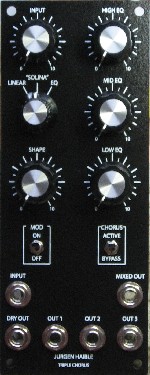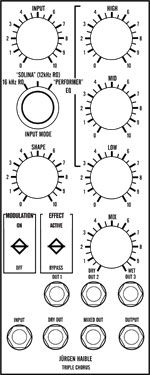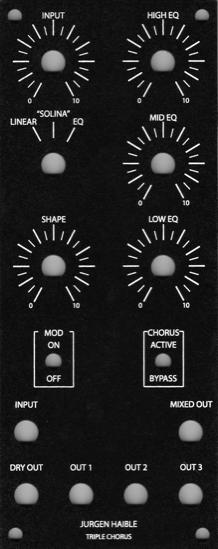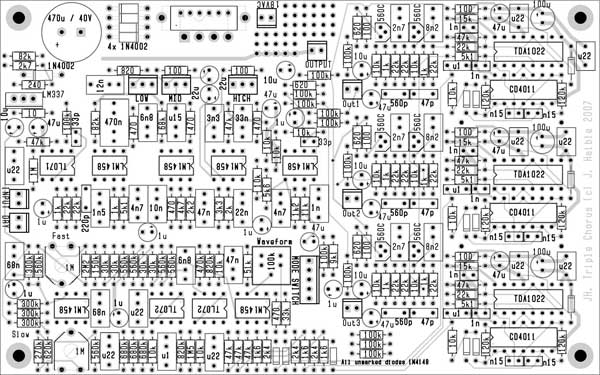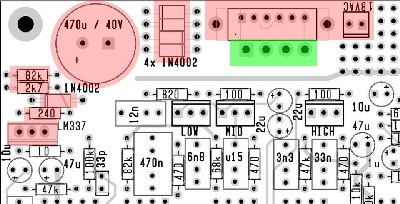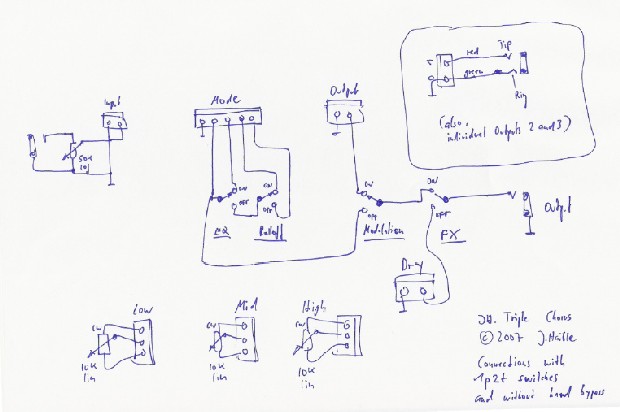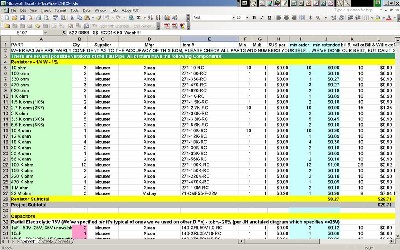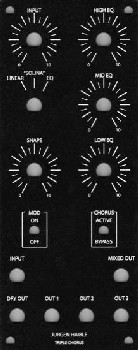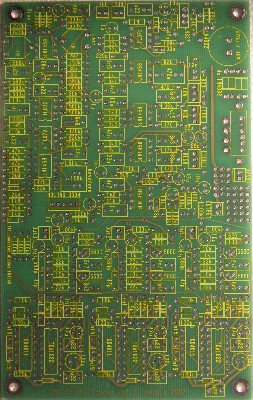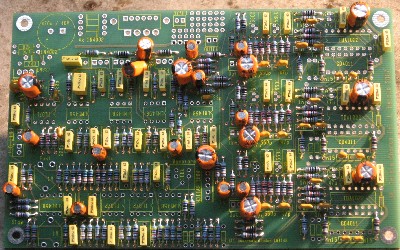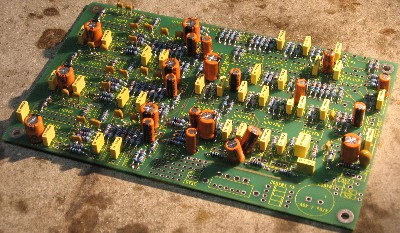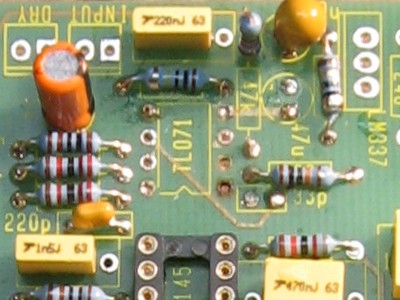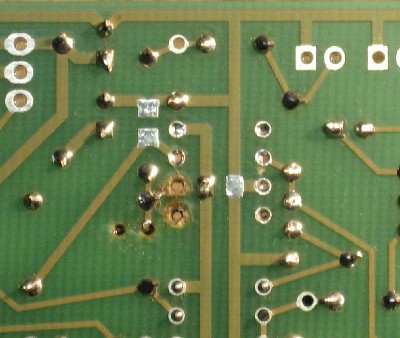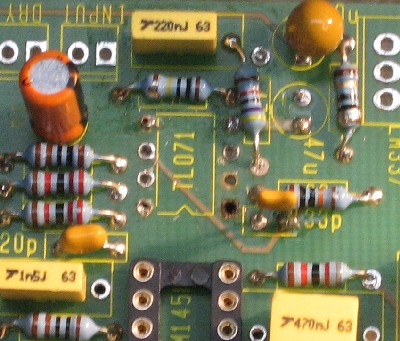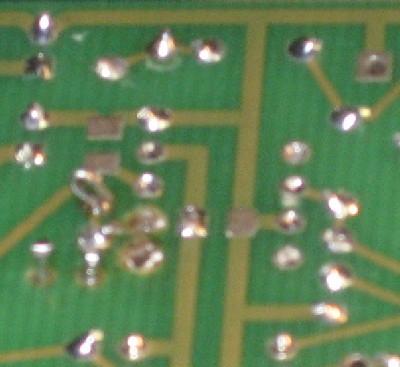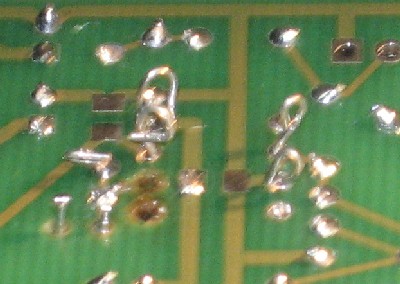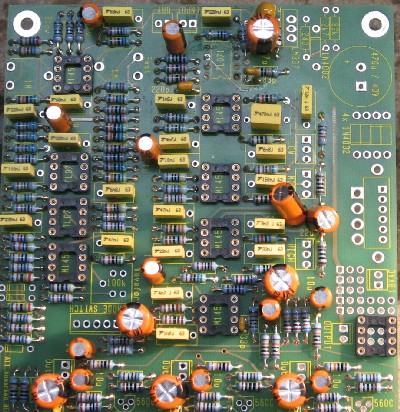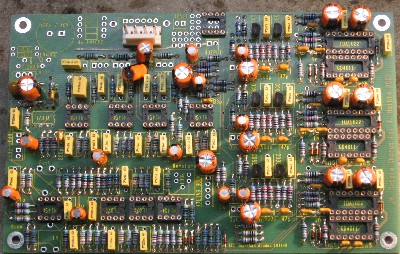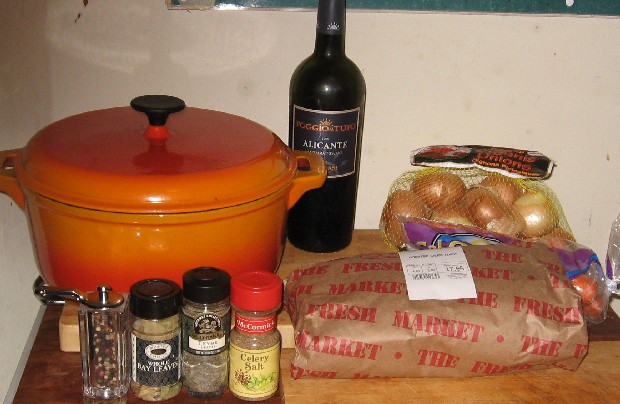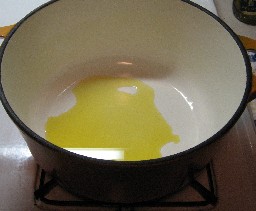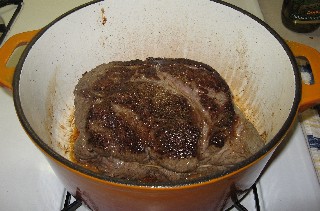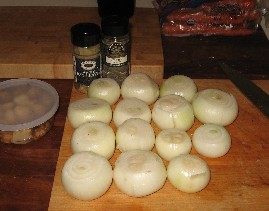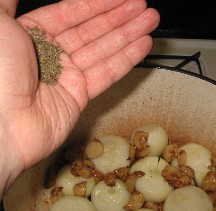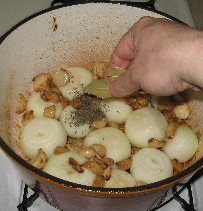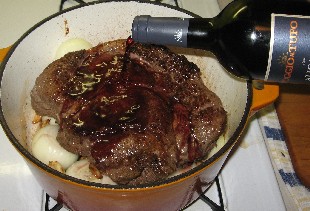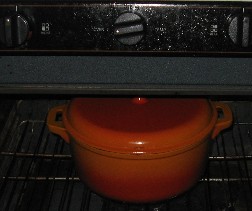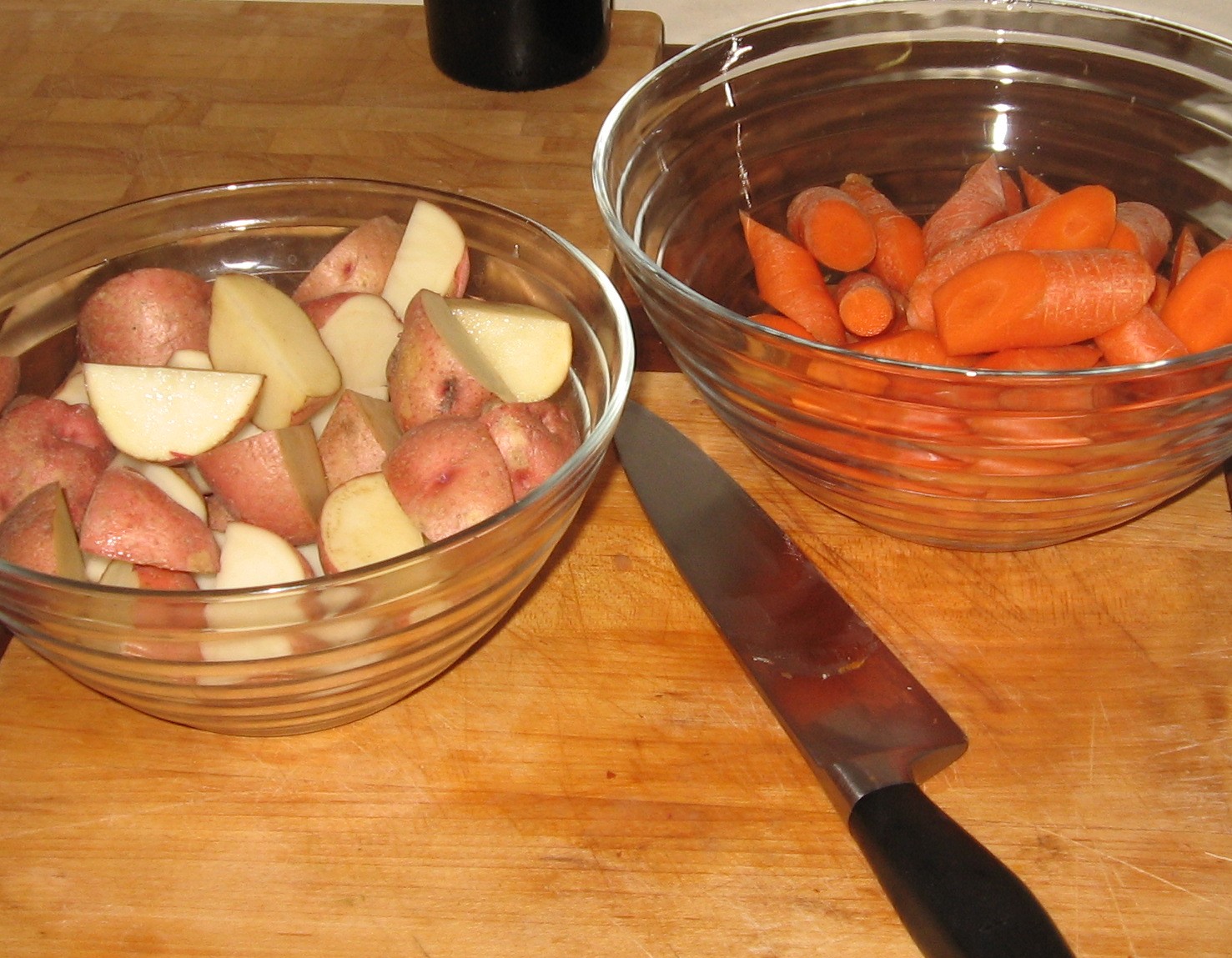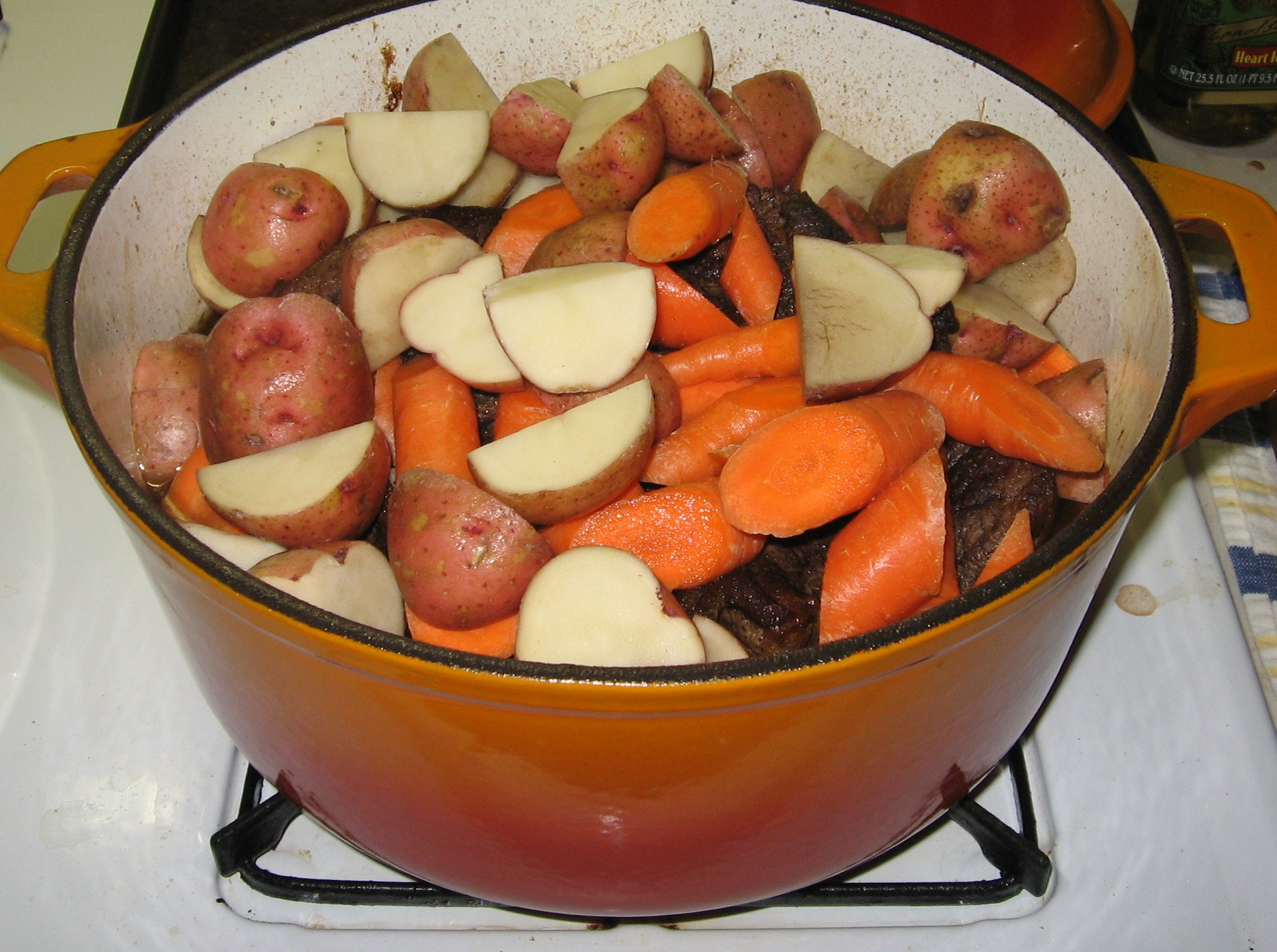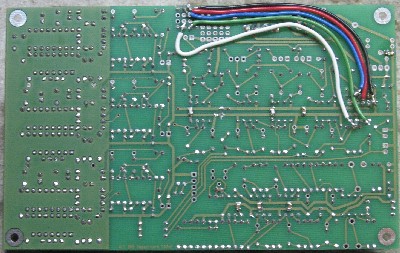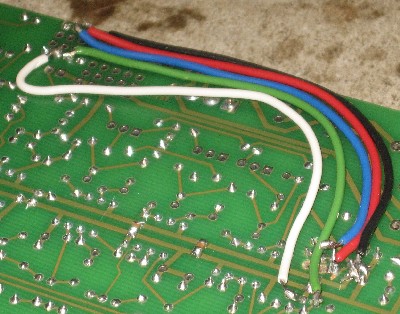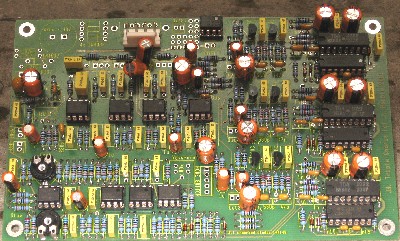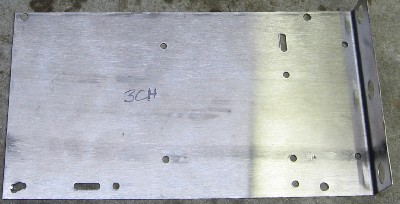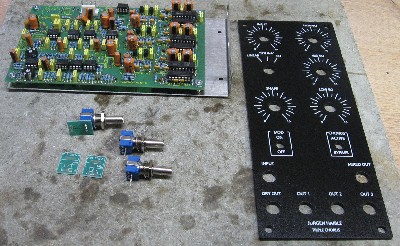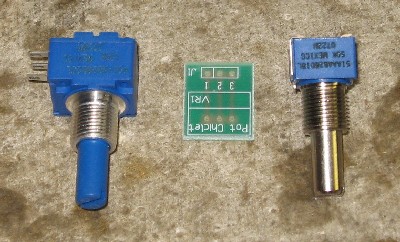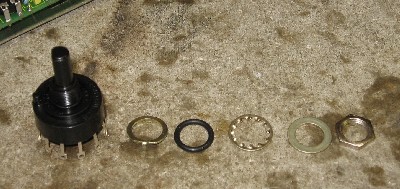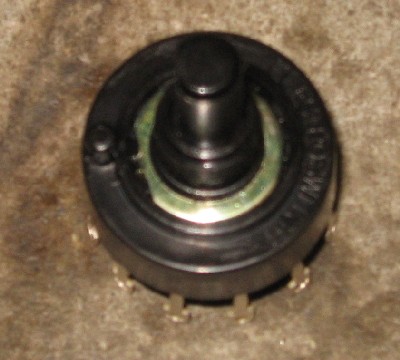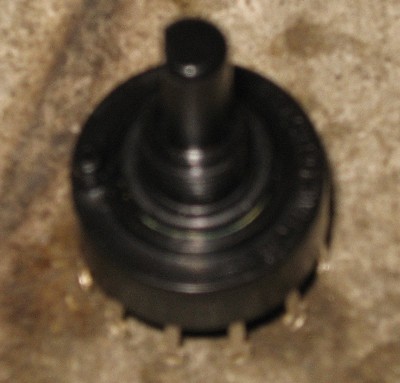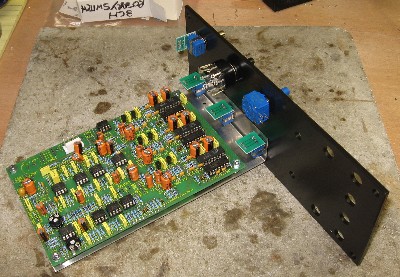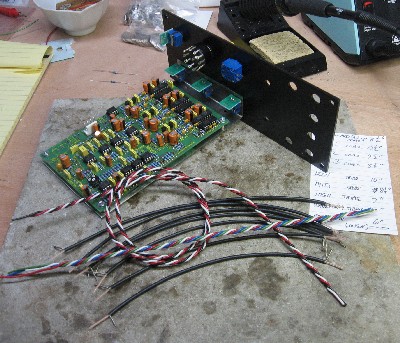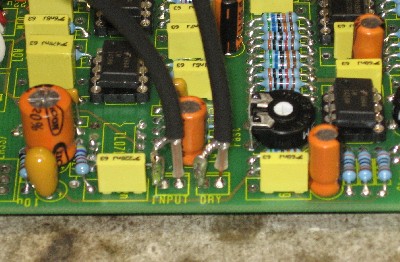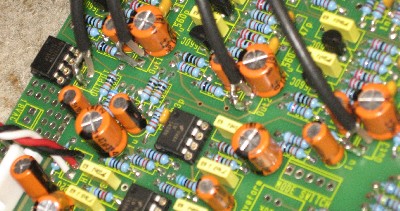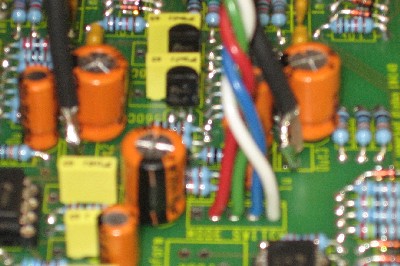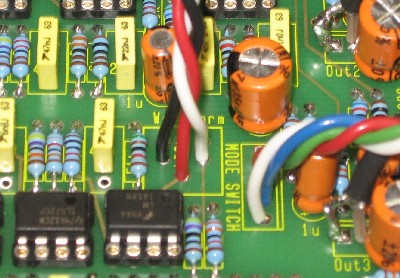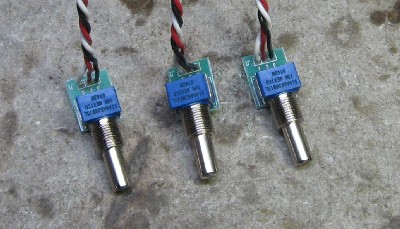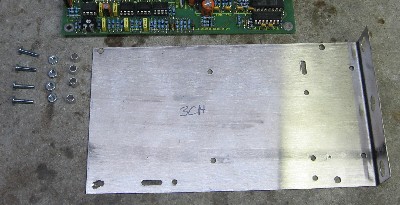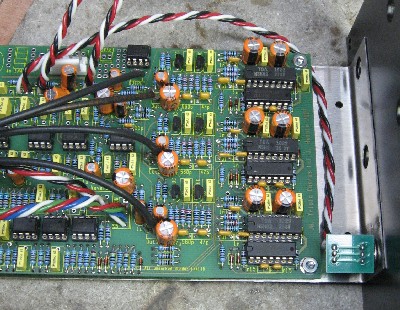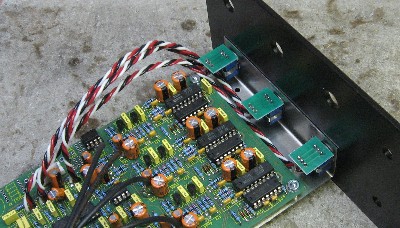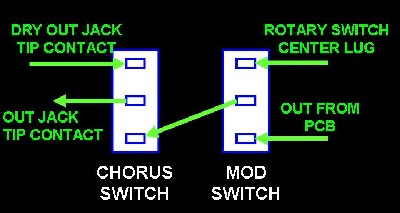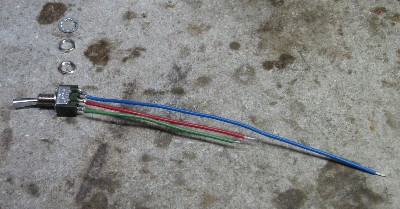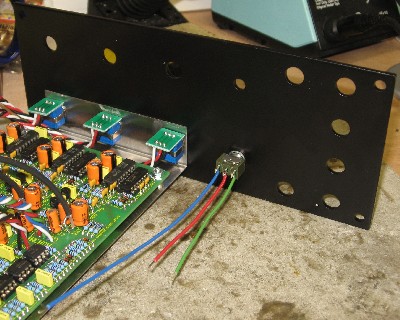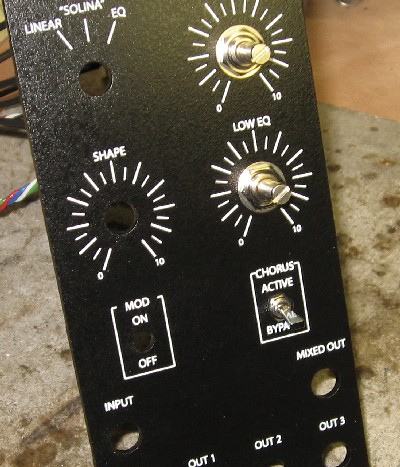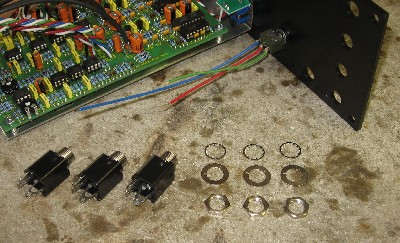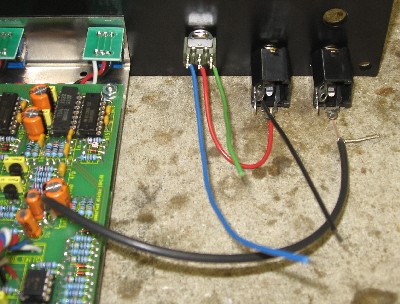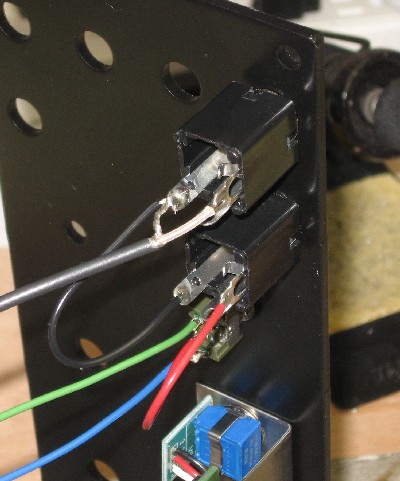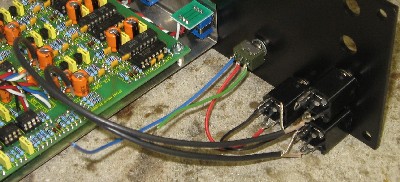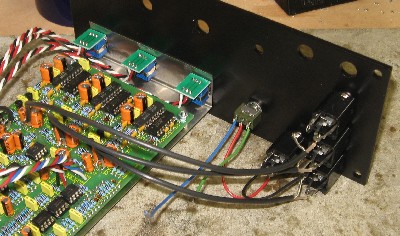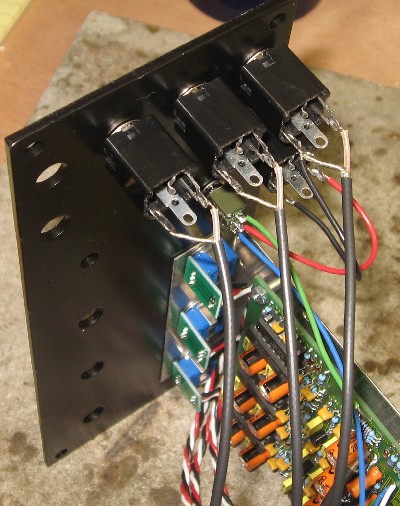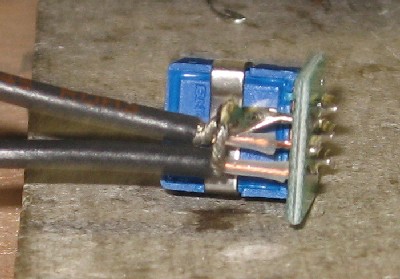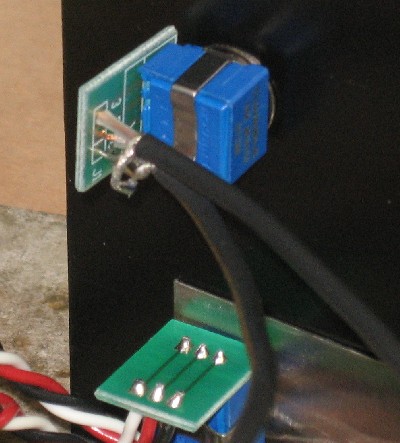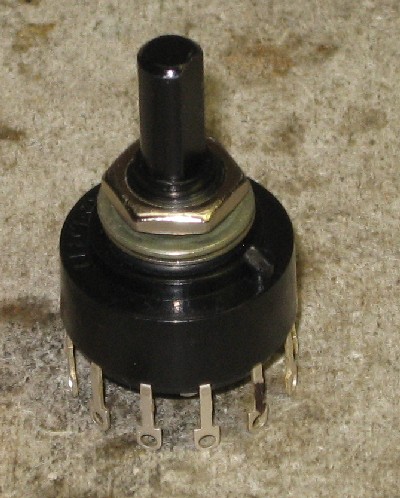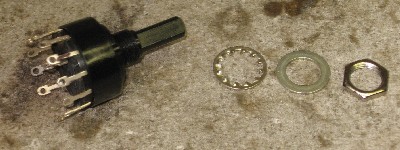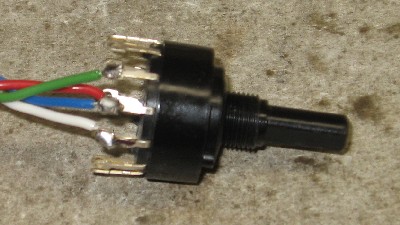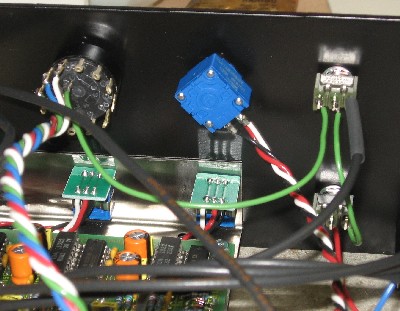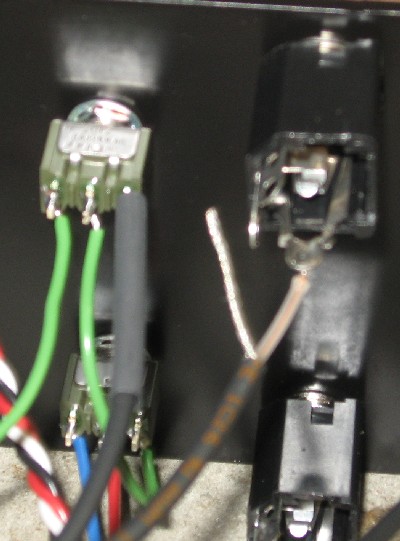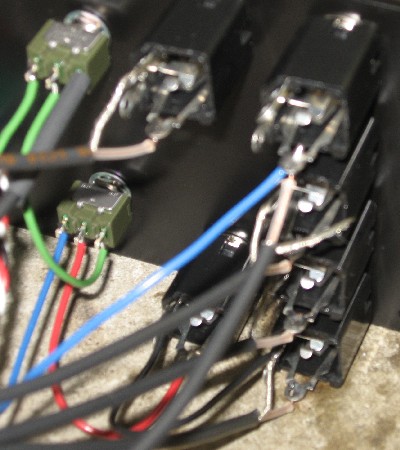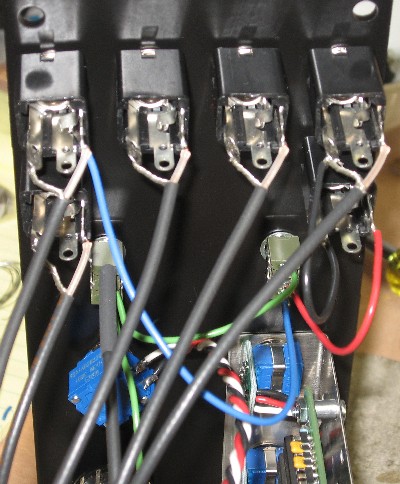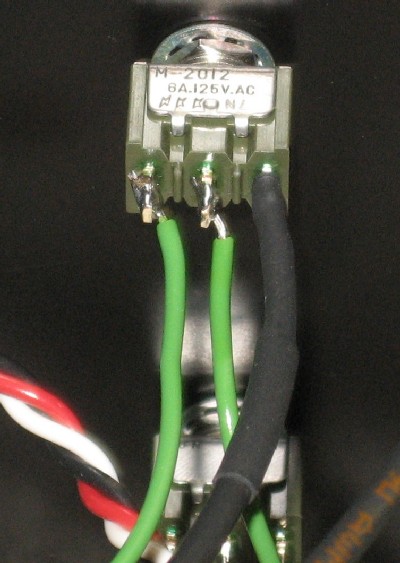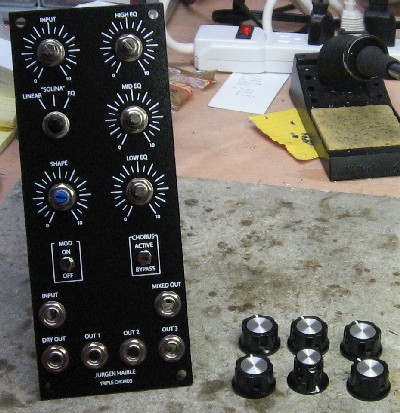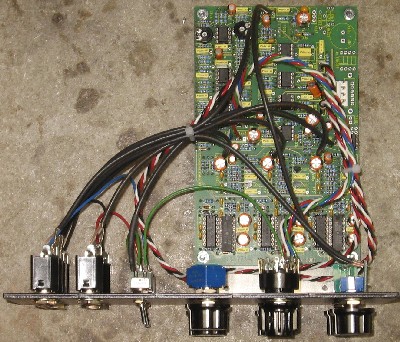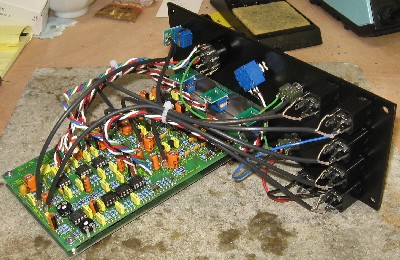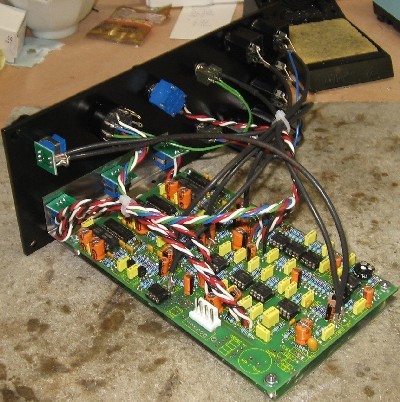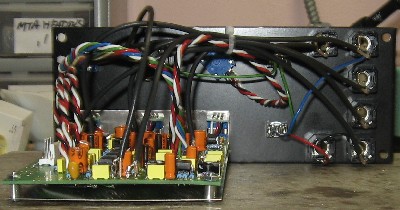Bill and Will's Synth
|
||
Table of Contents |
||
|
This page has become really long, so here's a table of contents that we hope will make it easier to traverse: Background - presents Jurgen's initial description of the effect Recapitulation of Construction/Feature Options - presents a simple list of the different possible implementations Option Details - presents all the details of the different possible implementations - you'll need to consider these in deciding how you'll build yours Parts - presents a Bill of Materials and notes about it Panel - presents how we, in collaboration with Jürgen and others, came up with our panels' design - ultimately Scott Deyo at Bridechamber fabricated the MOTM format one Construction Phase 1 - Resistors, Capacitors, IC Sockets, Power Plugs, MTA headers Construction Phase 2 - Trimmers, Panel connections |
||
Background |
||
|
Jürgen's site describes the effect: "The lush Sound of the Solina (TM) Ensemble is created by 3 BBD delay lines that are modulated in a unique way: There are two 3-phase modulation generators, one running at slow speed ("Chorus"), and one running at high speed ("Vibrato"). "We'll focus on one of the modulation generators first, 'Chorus': the slow one. '3-Phase' means that the modulation generator has 3 outputs, each of which's phase is roughly 120 deg apart from the previous output. Let's call them '0 deg', '120 deg,' and '240 deg' - it's easy to see that, with 360 deg describing a full circle, the three modulation outputs a modulation generator are equally distributed around a circle. They are routed to the CV inputs of the 3 BBD's clock VCOs. Modulation of a BBD line causes a pitch shift similar to the Doppler effect of a moving sound source, so with the 3 BBD lines modulated by the 3-phase control signals, a sonic image of 3 sound sources that are moving along the same circle, with equal distance to one another along the outline of the circle, is created. "Actually, each BBD clock VCO is controlled not by a single modulation generator, but by a combination of the slow and the fast generator. BBD1 sees a CV that is combined from the Chorus generator's "0 deg" output and the Vibrato generator's "0 deg" output. BBD2 sees Chorus "120 deg" and Vibrato "120 deg". BBD3 sees Chorus "240deg" and Vibrato "240 deg". "This method creates the famous 'Solina' sound, which was so successful that it has been emulated by other manufacturers. Of these, I have studied two very closely: The Crumar Performer, and the Dr. Boehm Phasing Rotor 78. I've also taken a look at the Korg Polysix's Ensemble mode." |
||
|
But Jürgen's posting doesn't fully describe the details of the different configurations possible. Here are the different options: |
||
Recapitulation of Construction/Feature Options |
||
|
1. Power Supply Options Option 1 - On-board power supply. Option 2 - MOTM-style dual power supply. 2. Connection/Control Options A. Basic Connection/Controls (common to all options)
Equalizer Knob- High Equalizer Knob- Low Effect Active/Bypass Switch Modulation on/off Switch Output Jack B. Input Control Option 1 - Minimal Version - this involves one jack. Option 2 - Basic Version - this involves one jack and a POT C. Mode Switching Option 1 - 3 Position Rotary Switch Option 2 - Two Toggle Switches - Roll-off Switch & Equalization On/Off Switch D. Wave Shape Adjustment Option 1 - On pcb Option 2 - On panel E. Extra Outputs Dry Output Individual Outputs 1, 2, & 3 F. Mixed Output - Mix Knob and a Mixed Output jack |
||
|
Option Details |
||
1. Power SupplyOption 1 On-board power supply - per Jürgen, "It contains a power supply (less transformer and primary fuse). You only have to connect 18V AC from a transformer." Option 2 MOTM-style dual power supply - per Jürgen, "I've also included the footprints of MOTM and .COM power connectors, if you want to run the board directly from 15V, without a transformer of its own. I've placed the footprint for the connectors beneath the (secondary) fuse, because you never need both at the same time. When connecting to 15V DC, you must omit a lot of the power supply components, too... By the way: The whole circuit only needs the -15V part of the MOTM and .COM system; the +15V pins of the connectors are unconnected. The audio signals are centered to 0V nevertheless, of course, due to AC coupling of inputs and outputs."
|
||
2. Connections and Controls
A. Basic Connection/Controls (common to all options)Equalizer Knob - High 10k linear POT - to "HIGH" on PCB Equalizer Knob - Mid 10k linear POT - to "MID" on PCB Equalizer Knob - Low 10k linear POT - to "LOW" on PCB Effect Active/Bypass Switch SPDT switch (per above diagram) from Output Jack Tip - ON to Modulation On/Off Switch, OFF to "Dry" on PCB Modulation on/off Switch SPDT switch (per above diagram) from Effect Active/Bypass switch (ON position) - ON to "Out" on PCB, OFF to "Mode Switch" on PCB position 1 Output Jack Switchcraft 112A Jack to "Out" on PCB B. Input ControlOption 1 - Minimal Version Switchcraft 112A Input Jack to "Input" on PCB Option 2 - Basic Version Switchcraft 112A Input Jack to 50K log POT to "Input" on PCB C. Mode SwitchingOption 1 - 3 Position Rotary Switch Switch center to Mode Header Position 2 16kHz Roll Off 3 Position Switch to Mode Header Position 4 "Solina" 12kHz Roll Off 3 Position Switch to Mode Header Position 3 "Performer EQ 3 Position Switch to Mode Header Position 2 Option 2 - Two Toggle Switches Equalization On/Off Switch SPDT switch (per above diagram) from "Mode Switch" on PCB position 1 - ON to position 2, OFF to Roll-off Switch Roll-off Switch SPDT switch (per above diagram) from EQ switch OFF - ON to "Mode Switch" on PCB position 3, OFF to "Mode Switch" on PCB position 4 D. Wave Shape ControlOption 1 - 100k trimmer on PCB Option 2 - 100k "SHAPE" POT on Panel E. Extra Outputs Dry Output - Switchcraft 112A Dry Out Jack to "Dry" (Output) on PCB Individual Outputs three Switchcraft 112B (TRS) jacks to "Out 1," "Out 2," and "Out 3" on PCB F. Mixed OutputVersion 1 - Switchcraft 112A MIX OUT jack to 10k lin "Mix" POT to DRY and OUT on PCB Version 2 - Switchcraft 112A MIX OUT jack to buffer daughter-board - either MUUB2 or Ken Stone Tiny Buffer from Bridechamber to 10k lin "Mix" POT to DRY and OUT on PCB |
||
Parts |
||
|
Will and I have developed a parts-list / bill-of-materials in the form of an XL spreadsheet. Jürgen has been very patient and helpful answering our many pesky questions. As of today, 26 January 2008, it's not entirely complete because it doesn't really address parts that may be needed for the implementation of buffer / inverters for the "DRY" and "MIX" outs. WE're not even really sure how we're going to handle these features yet. In the BOM, the left-most column is the "part." The parts we've ordered have a green background. These parts we have a high (but not perfect) level of confidence that we've specified correctly - we caught a mistake or two in part numbers / prices as we were ordering. please double-check us and let us know of mistakes you find. Click here to see Jürgen's Bill of Materials. Corrections to BOM: None yet - Notes: None yet - Click here to download the spreadsheet (apx. 350K). |
||
Panel |
||
|
With the help of Jürgen and in collaboration with and with input from Mike (mrmike of clickbang) and Scott Deyo (Bridechamber.com), Will and I developed the Panel design at the top of the page. If you click on that drawing, you can see a bigger version. The evolution of the design isn't really worth exploring. The design went back and forth between us and Jürgen several times - each time he was clarifying how the features should be interpreted.
Will and I then developed the following rack-mount panel design for my stage equipment guitar-rack. Thanks again to Mike for his suggestions.
But then, in September of aught 8, as we finally approached building the module, we took a closer look at Jürgen's schematics. His schematic shows a 3 position rotary swithc used for Mode switching. So we re-visited our panel design adding the rotary switch and Will's Mixed Output idea.
Scott Deyo developed his panel based, in part, on our rotary-switch design. We got one of his panels: |
||
|
November 2008 PCBHere's what the PCB looks like... |
||
|
March 2009 - Construction Phase 1All the stuff in Phase 1 gets soldered using "Organic" Solder. At every break in the action, we wash the board off to get rid of the flux. |
||
|
Resistors |
||
|
The PCB is very dense. It took us 6 hours in two sessions (washing inbetween) just to do the resistors. |
||
|
Capacitors |
||
|
Box Caps Ceramic Caps
Electrolytic Caps
We decided to come back and do the dinky SMT caps after the IC sockets... |
||
|
IC Sockets |
||
|
So we started in on the IC sockets - when tragedy struck! (duzz duzz duzz) Somehow, as I was soldering in the socket for the TL071 - up there by the tantalum cap - one of the pins got stuck and it wouldn't sit all the way down. And I tried to fiddle with it and it only made it worse. And I tried to un-solder it and the pliers slipped and damaged the 33p cap and as I struggled, the 47K resistor and further destroyed two solder pads and a trace. <groan!> I cut away the broken parts - -
We decided to mount the TL071 down in that little bread-board area by the OUTPUT point. We'll run jumpers down to it as required. But first to repair the damage...
Now to finish the IC sockets. |
||
|
|
||
Construction Phase 2All the stuff in Phase 2 gets soldered using "No-Clean" Solder and the PCB doesn't get washed off from here on. |
||
|
SMT caps / TL071 fix jumpers |
||
|
OK - now, - you won't have to do put in the jumpers because you will not have destroyed the TL071 socket (if you're even using sockets at all)... |
||
|
ICs and Trimmers |
||
|
We put the ICs in their sockets and soldered in the two 1M trimmers |
||
|
Mounting Bracket |
||
|
A three-pot "Stooge" style panel from Bridechamber just barely fit the Triple-Chorus PCB. We drilled special holes - the bottom left was pretty sloppy - but it worked anyway. |
||
|
Test Mount |
||
|
We did an elaborate test-mounting of the PCB, Mounting Bracket, Panel Mounted Pots and Rotary Switch, and the Panel so we could determine the various wire-lengths required for soldering into the PCB.
But then there's the matter of the MODE rotary switch - and we took a little time to figure this out... See - the switch has 12 positions but we only want to use three.
Right - so here they are screwed into the panel... |
||
|
PCB Wiring |
||
|
Here's how we figured the wires should be: HIGH pot (10K lin) - twisted triple wire 7in. MID pot (10K lin) - twisted triple wire 8-1/2in. LOW pot (10K lin) - twisted triple wire 10in. INPUT to INPUT pot - coax 8-1/2in. MODE switch - twisted quadruple wire 6in. WAVEFORM (SHAPE) to OUT 3 jack - twisted triple wire 7in. OUT (on PCB) to MOD switch - coax 8-1/2in. DRY OUT (on PCB) to DRY OUT jack - coax 10in. OUT 1 (on PCB) to OUT 1 jack - coax 10-1/2in. OUT 2 (on PCB) to OUT 2 jack - coax 9-1/2in. OUT 3 (on PCB) to OUT 3 jack - coax 8-1/2in. So we took things apart again so we could solder the wires into the PCB.
|
||
|
Bracket mounting |
||
|
First step - solder on the HIGH, MID, and LOW EQ 10K pots - then mount the PCB and bracket to the panel.
|
||
|
Bypass Switch |
||
|
We want to finish the "Right Row" (that's the left one from the back) first because it's easier to build the module "up" lying on its side like this... so next in the bypass (or CHORUS) switch. First lets contamplate how the switches should be wired up:
So for the CHORUS (bypass) switch, we'll use three pieces of wire: DRY OUT JACK TIP CONTACT (top lug) - 6in. OUT JACK TIP CONTACT (middle lug) - 3in. from MOD SWITCH (bottom lug) - 3 in. |
||
|
Output Jacks |
||
|
|
||
|
Input Pot |
||
|
Now to start on the "Left Row" (that's the right one from the back). |
||
|
Rotary Switch |
||
|
Here is the rotary switch. Using Granddad's ohm meter, we determined what lugs correspond to the different positions of the switch. We marked the left-most (LINEAR) one. We also trimmed off the no-turn pin because there's no hole for it in the panel. I suppose we could have drilled one... but we didn't. |
||
|
SHAPE pot and MOD swirch |
||
|
Here is the Rotary switch mounted in the panel and also the SHAPE pot with its connections. A wire (green) connects the center lug of the rotary switch to the top lug of the MOD switch. The green wire from the CHORUS (bypass) switch bottom lug goes to the MOD switch center lug. We trimmed back the shield of the OUT coax, slipped some heat-shrink onto coax, and soldered the signal wire to the MOD switch bottom lug. |
||
|
The rest of the jacks |
||
|
|
||
|
Knobs |
||
|
Construction Done |
||
Set up / Testing |
||
Use Notes |
||
|
|
||
|
The fine Print: Use this site at your own risk. We are self-proclaimed idiots and any use of this site and any materials presented herein should be taken with a grain of Kosher salt. If the info is useful - more's the better. Bill and Will © 2005-2011 all frilling rights reserved
|
